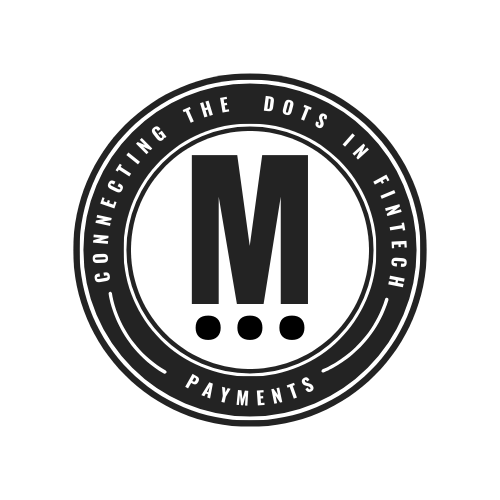India's Paytm Receives Government Approval for Payments Arm Investment

Hey Payments Fanatic!
India's Paytm has received government approval for a 500 million rupee ($5.97 million) investment in its key subsidiary, Paytm Payment Services.
This approval, delayed due to the company's ties to China, allows the subsidiary to resume normal operations. Paytm Payment Services accounted for a quarter of the fintech firm's revenue in the fiscal year ending March 2023.
Financial services secretary Vivek Joshi stated that Paytm can now seek a payment aggregator license from India's central bank. Following this news, Paytm shares rose 10%.
Enjoy more Payments industry news I listed for you below and have a great start to the week!
Cheers,
Stay Updated on the Go. Join my new Telegram channel for daily updates and real-time breaking news. Stay informed and connect with industry enthusiasts —subscribe now!

INSIGHTS
How do consumers pay in Latin America?
Here's a breakdown:

PAYMENTS NEWS
🇨🇦 Airwallex partners with Float to deliver fast, cost-effective bill payments to Canadian businesses. Float’s Bill Pay product, powered by Airwallex, introduces payouts – including bank transfers, EFT, wire, and ACH – as part of Float’s unified business finance platform for Canadian companies.
🇬🇧 Bankzy Open Banking launches new feature in the UK. Through this move, Bankzy is set to enable merchants to issue payment requests to customers, either individually or in bulk. In addition, clients can leverage their merchant portal to issue payment requests through WhatsApp, SMS text, or email.
🇺🇸 Stripe now supports the Avalanche C-Chain. Retail users can purchase AVAX directly “through Stripe, removing the need to go through an exchange.” Available to U.S. Stripe’s fiat-to-crypto onramp is “a customizable widget embedded into Avalanche dApps, such as DEXes, NFT platforms, and digital wallets.”
🇺🇸 Swivel unveils Apple Pay® integration to enhance loan payment performance for community financial institutions. SWIVEL’s integration with Apple Pay features a proactive capability that automatically filters cards loaded within a consumer’s Apple Pay wallet and presents only the cards that can be used as acceptable payment options for an individual loan.
🇺🇸 Kasheesh introduces Multi Use Card: Split payments across multiple cards for flexibility, convenience, and credit optimization. The feature offers one reusable card that can split purchases across up to five debit, credit cards, and gift cards by choosing a percentage for each.
🇳🇱 PayU GPO appoints Simona Covaliu as Chief Risk Officer. At PayU GPO, Simona will be working with the Privacy, Compliance, Risk, and Security teams to enhance transparency and support informed product development decisions, reducing risks for SMBs and enterprises.
🇵🇱 PayEye and Worldline partner to develop and launch payment services based on biometric technology. This combines iris and facial biometrics for the first time. When making a payment at the eyepos terminal for the first time, a unique code is generated in real-time based on the user's biometric features.
🇺🇸 Payments giant Stripe has acquired a four-year-old competitor, Lemon Squeezy to help build a global merchant of record solution. Terms of the deal were not disclosed. Read the full article
🇱🇹 Bank of Lithuania appoints interim representative, imposes restrictions on Kevin. Due to the rising threat to safe and reliable operations of kevin, UAB's operations and consumer interests, the Bank of Lithuania appointed an interim representative and imposed business restrictions.
GOLDEN NUGGET
How does ‘Scan to Pay’ work (for PayPal, Cash App, Venmo, Paytm)?

Let’s break it down:
To understand the process involved, we need to divide the “scan to pay” process into two sub-processes:
► Merchant generates a QR code and displays it on the screen
► Consumer scans the QR code and pays
Here are the steps for generating the QR code:
1️⃣ When you want to pay for your shopping, the cashier tallies up all the goods and calculates the total amount due, for example $123.45. The checkout has an order ID of SN129803. The cashier clicks the “checkout” button.
2️⃣ The cashier’s computer sends the order ID and the amount to PSP.
3️⃣ The PSP saves this information to the database and generates a QR code URL.
4️⃣ PSP’s Payment Gateway service reads the QR code URL.
5️⃣ The payment gateway returns the QR code URL to the merchant’s computer.
6️⃣ The merchant’s computer sends the QR code URL (or image) to the checkout counter.
7️⃣ The checkout counter displays the QR code.
These 7 steps complete in less than a second. Now it’s the consumer’s turn to pay from their digital wallet by scanning the QR code:
1. The consumer opens their digital wallet app to scan the QR code.
2. After confirming the amount is correct, the client clicks the “pay” button.
3. The digital wallet App notifies the PSP that the consumer has paid the given QR code.
4. The PSP payment gateway marks this QR code as paid and returns a success message to the consumer’s digital wallet App.
5. The PSP payment gateway notifies the merchant that the consumer has paid the given QR code.
Sources: ByteByteGo
Want your message in front of 100.000+ FinTech fanatics, founders, investors, and operators?
Shoot me a message on LinkedIn.



Comments ()